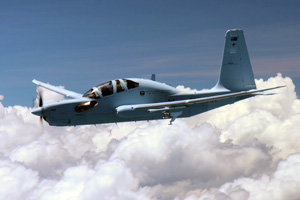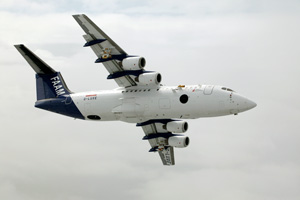Aircraft studies
The Centre for Atmospheric Science makes use of, and provides instruments for several different aircraft which are suitable for characterising ice and liquid clouds, and has also been lead institute on a major multiple aircraft project.
Airborne studies allow characterisation of cloud types which are not readily studied in-situe from ground based platforms, such as high altitude cirrus cloud, and convective storm systems. Additionally airborne studies are able to probe different levels of a cloud system and also map how its properties vary with special extent. Airborne platforms can also provide characterisation of air above and below cloud layers, or around isolated convective systems. Airborne measurements are often used in conjunction with ground based measurements to put the detailed ground based measurements into context when large systems are being studied.
Much of the centre’s airborne cloud work is based n the UK Natural Environment Research Council’s Facility for Airborne Atmospheric Measurement (FAAM) BAes 146 aircraft. This aircraft is a four engine regional jet airliner, which has recently been completely re-fitted for atmospheric research (originally it was the prototype for the 146 series), and is used by UK universities and the Met Office. The Centre for Atmospheric Science provides a suite of cloud microphysics and aerosol instrumentation for use on our own and other projects on this platform. The cloud instruments provided are a Cloud Particle Imager (CPI), Airborne Droplet Analyser (ADA), SPEC 2D Greyscale Probe (2DS), Cloud Droplet Probe (CDP), and DMT Cloud Aerosol and Precipitation Spectrometer (CAPS). Further details of the instruments provided can be found here. In addition to our own instrumentation, the facility has access to a wide range of other instrumentation covering cloud microphysics, aerosol, trace gases and radiation.Cloud experiments conducted on this aircraft have included: studies of low level marine stratiform cloud and it’s interaction with pollution downwind of major urban areas in the UK; studies of high altitude cirrus cloud around the UK; convective systems in early stages of development, looking at the transition from liquid to ice phase. These projects have characterised cloud microphysical properties of these clouds, as well as aerosol properties in, above, and below cloud. Further information about projects conducted using the 146 can be found on the FAAM website here and a few examples are covered in more detail on our project pages here.
In addition to making measurements using the FAAM aircraft, the Centre for Atmospheric Science has also installed cloud physics instruments on other aircraft for specific projects. These aircraft include the Airborne Research Australia Egrett aircraft (pictured above) and the NERC ARSF Dornier aircraft. Much of the cloud physics instrumentation used in ground based studies is also suitable for use on airborne platforms.
Multiple aircraft studies are used to simultaneously probe different levels of the cloud, or the inflow and outflow regions at the same time as cloud properties are studied. Additionally remote sensing instruments may be flown on one aircraft, while in-situe measurements are made with another. Measurements may also be made in conjunction with ground based in-situe or remote sensing sites.
The centre has participated in and led multiple aircraft projects to study cirrus cloud formed by frontal systems, and from the outflow of deep tropical convection. During the EMERALD projects cloud microphysics instrumentation from the centre was installed on the Airborne Research Australia (ARA) Egrett high altitude aircraft, while a depolarising cloud lidar was flown on the ARA King Air. The Egret flew in-situe, while the King Air flew directly below to measure cloud properties remotely, and help put the in-situe measurements in context. Additionally the in-situe information provides validation of the retrieval of cloud properties from lidar data. During the ACTIVE project, the Egrett was again used with a suite of cloud instruments, and additionally gas phase and aerosol instrumentation (some of which was provided by the centre). In this experiment, the NERC Airborne Remote Sensing Facility’s (ARSF) Dorner 228 aircraft was used at low altitude, to measure gas and aerosol properties in the inflow region of the large convective systems being studied. This project was carried out in conjunction with a ground based radar site, multiple weather balloon launches, and aircraft from other institutes in Europe and the US, as part of the SCOUT-O3 and TWP-ICE projects.
In addition to making measurements on dedicated research aircraft, the centre is also involved in projects to develop instrumentation which can be flown on commercial freight and passenger aircraft. While these aircraft avoid some types of cloud, profiles through cloud on take off and landing are relatively common, as is flight through thin cirrus cloud at high altitude. Having such packages installed on a commercial fleet provides a very cost effective way of making measurements at a wide variety of location around the globe over an extended period of time. This type of work requires instrumentation which is able to operate autonomously with relatively long periods between maintenance, unlike on research aircraft where there is often an operator on board, or at worst the instrument can be checked and maintained as required in between each flight. Further, instrumentation which is operated on commercial flights must meet all the demanding safety requirements that normal aircraft equipment is subjected to.

